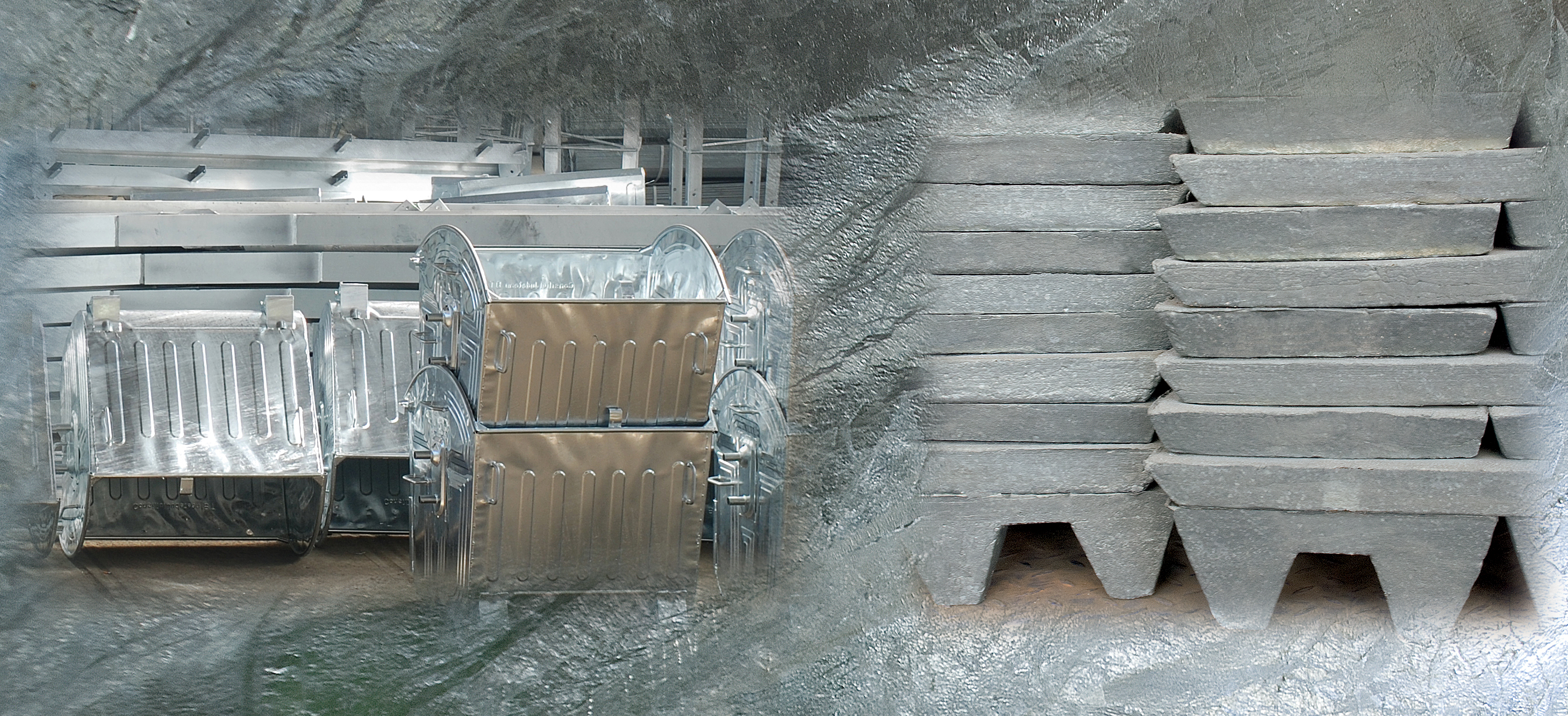Hot dip galvanizing – the process, conditions, requirements and qualitative details
 The purpose of hot dip galvanizing is that of ensuring the anti-corrosive protection through the hot dip galvanizing of finite products made of steel or crude iron. The hot dip galvanizing performed by BergBanat complies with the general technical and quality requirements of SR EN ISO 1461-2009.
The purpose of hot dip galvanizing is that of ensuring the anti-corrosive protection through the hot dip galvanizing of finite products made of steel or crude iron. The hot dip galvanizing performed by BergBanat complies with the general technical and quality requirements of SR EN ISO 1461-2009.
The hot dip galvanizing process per se consists of the immersion of the piece in molten zinc for a few minutes, at a temperature between 450±5 oC.. Hot dip galvanizing is generally applied to soft steel and steelwork, to crude iron or molten steel.
Metalwork as long as 9 m can be hot dip galvanizing in a double hot dipping process.
Requirements for metalwork which is to be hot dip galvanized:
The metalwork to be hot dip galvanized should have accessible surfaces and should be easy to handle. The mechanical rigidity of the piece will be maintained as much as possible, in order to avoid its distortion in the tank.
The surface of the raw metal should not have pores, fissures, retouches, non-metallic materials, paint, oil, or grease stains, cinders, oxides, other flaws which can persist after hot dip galvanizing, having a negative influence on the aspect and quality of the coverage. The pieces will be designed and made according to the specific requirements of hot dip galvanizing and SR EN ISO 1461-2009. In order to obtain a hot dip galvanizing layer with even thickness and quality, the elements that make up the steel should not exceed the following values: silicium (0.12%-0.25%), phosphorus (max.0.25%), carbon (max.0.2%). manganese (max.1.5%). For the steel that contains more than 0.04% Si, the thickness of the layer will reach the value of 0.08%Si. Between 0.08% Si and 0.17 Si, the zinc layer diminishes, growing again for values above 0.22%Si.
The alloyage used by BergBanat in the hot dip galvanizing tank also contains Ni, which enables it to increase its fluidity, with positive consequences on the thickness of the layer found on the piece. Under these circumstances, the surface becomes smoother and has an increased resistance against the wearing course.
Requirements for the zinc layer:
For proper hot dip galvanizing, the zinc used should have a purity of at least 98.5 %, according to SR EN ISO 1461-2009. The average thickness and the weight of the zinc layer per surface unit fit the values in Chart 1.
The minimal thickness of the coverage should be at least 80 microns of the prescribed value in the chart. The zinc layer should be continual on the entire surface. Uncovered spots, rust stains, acid, flux or ash stains are not allowed. The surface of the zinc layer should be smooth, with no swellings, blisters, scrubs or excessive coverage. The colour of the zinc layer can vary from shiny silver to matted grey, depending on the composition of the material. The flaws resulted from the hot dip galvanizing process can be repaired only with zinc or zinc-aluminum spray.
Resistance to corrosion
The zinc alloyage deposited after the hot dip galvanizing protects the surface of the pieces by means of the barrier created between the steel and the environment and by means of a cathodic protection (the zinc has a lower electro-chemical potential than the iron, so the former becomes anode, while the latter becomes cathode). It is a known fact that the zinc layer has the following under-layers: eta, zeta, delta, gama, alpha, each of them having a different degree of hardness and each of them being successively exposed to corrosion. The eta layer being the first one, it is exposed in the first hours after the hot dip galvanizing process. The products resulted from the corrosion are invisible at first, but later they turn white, they become soluble and can be washed off by the rain. The following layers are then exposed to corrosion, the speed of this process depending on such factors as: the frequency and duration of the exposure, the degree of moisture, the wind speed and direction, dust, the sun, the degree of pollution in the original environment of the piece. To give an example, it is a fact that the sulphur dioxide has a strong influence on the corrosion of zinc, and this is why the maximum level of corrosion is reached in winter, when the fuel used for heating gives off large quantities of sulphur dioxide.
Transportation and storage
In order to avoid the deterioration of the zinc layer, the pieces are handled with textile tie bands and laid down on wooden beams or rubber (plastic) buffers, so that the scratching or the alteration of the protective zinc layer can be avoided.

